I’ve been developing my charcoal drawing techniques for around four years now – it’s such a versatile material there’s still much more to discover. Many of my favourite drawings from my early days at art school are charcoal ones. I have fond memories of the first time I was encouraged to tape a piece to a stick and draw BIG!! I thought my tutor was mad at first but it turns out to have been a valuable lesson and I often draw with a stick now. People I teach now think I’m mad I suppose.
My discovery of charcoal powder was quite a revelation – I’d tried to make my own, having some success with homemade bonfire remains, but I now use Cretacolor powder which has an even particle size and consistent tone. It’s perfect for large drawings, behaves almost like paint in that it can be moved around on the paper, can be combined with binders and water for liquid effects and best of all, I can apply it with my hands, thus getting messy which makes me happy.
I also use regular willow charcoal of various sizes. I’ve tried hard to like compressed charcoal since it allows a really deep black to be achieved, but I cannot get on with it, it’s somehow far too waxy and stubborn. I’m currently experimenting with charcoal soaked in or mixed with linseed oil – it seems to give a lovely blackness which adheres to the paper quite well. Because of this I’ve been able to use it out in the field without the usual worries about smudging. Here’s one I made earlier:
I think there’s something poetic about depicting wood with its carbonised self.
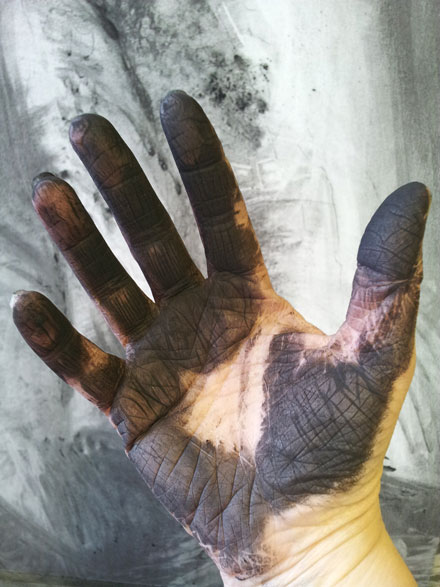


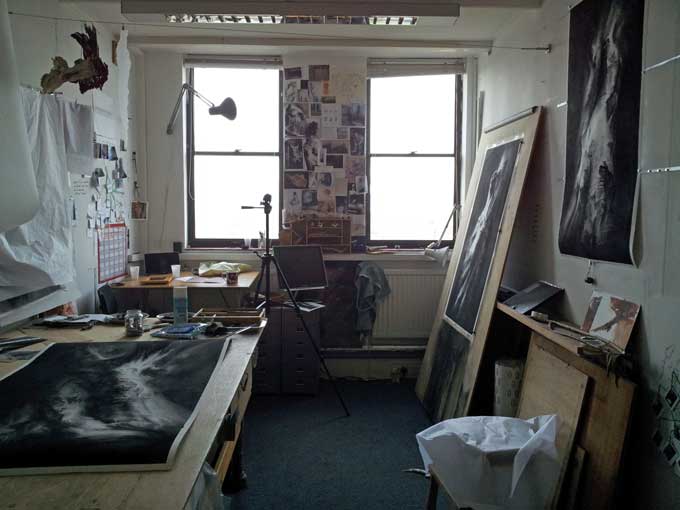
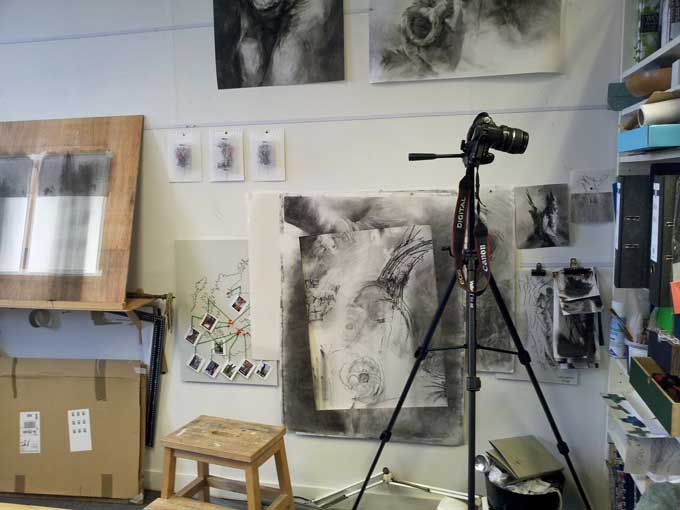
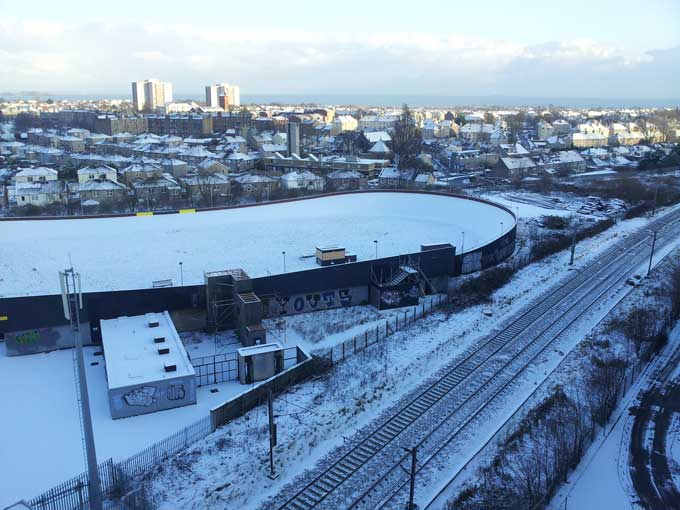




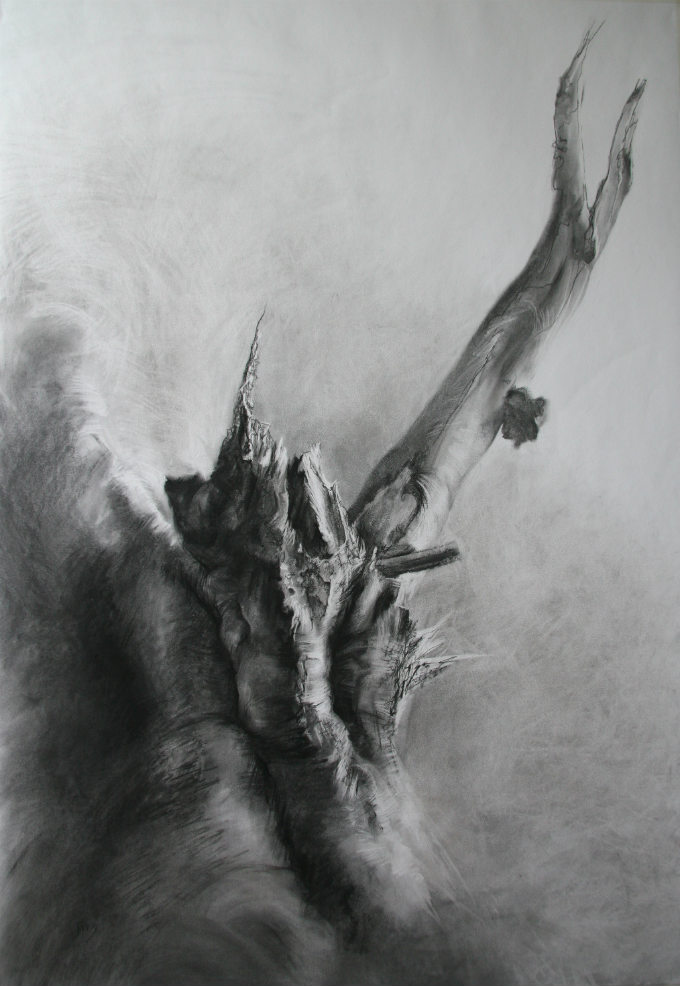
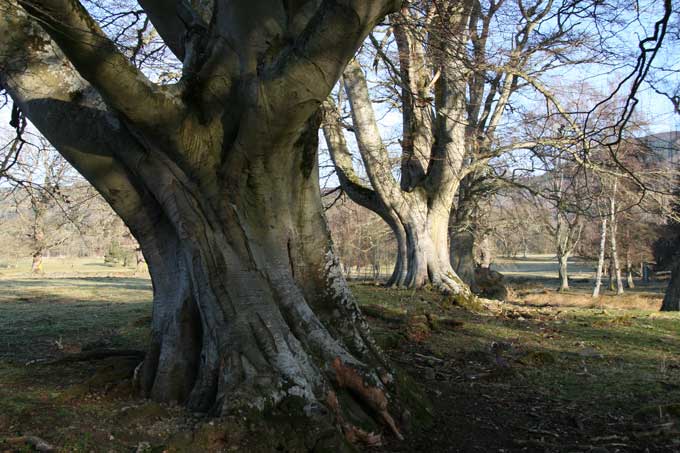





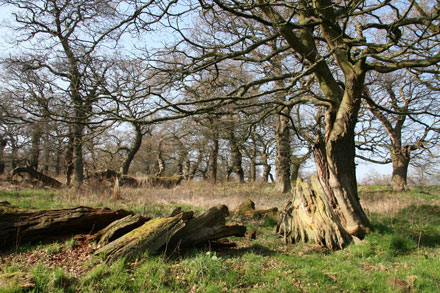 Oaks at Dalkeith Country Park
Oaks at Dalkeith Country Park
